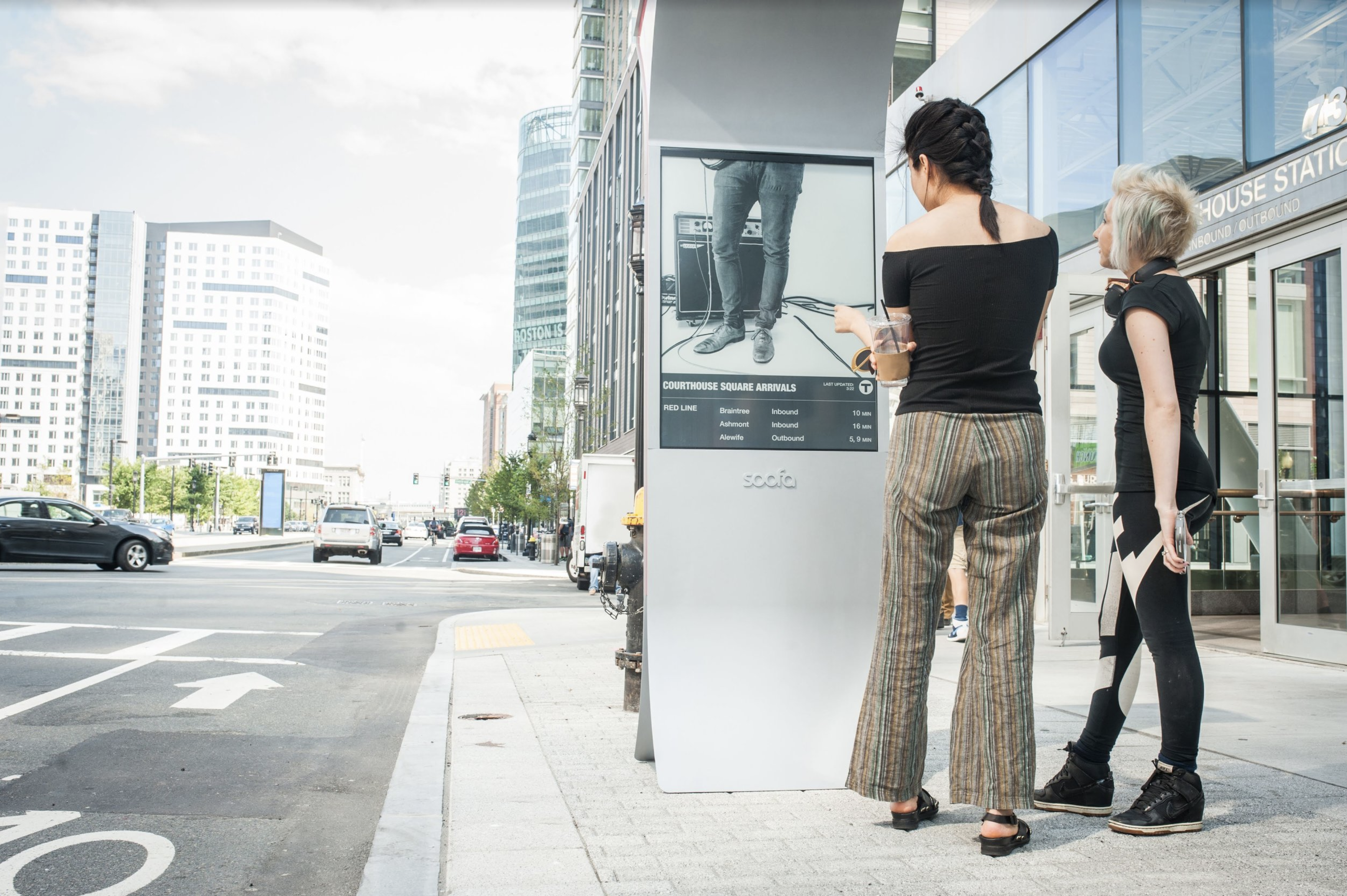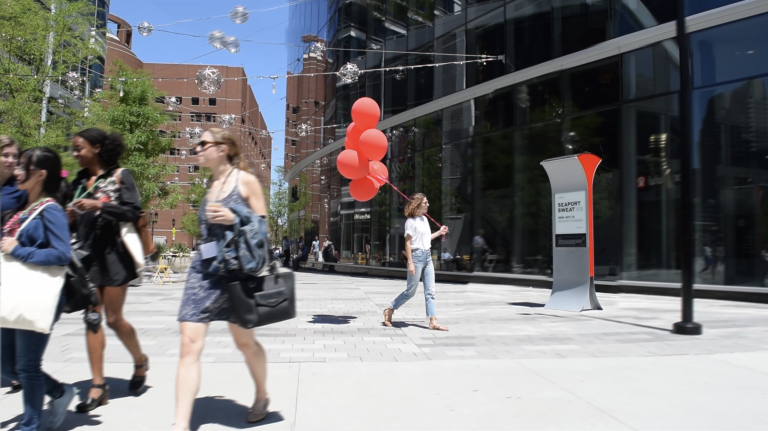3 Key Strategies for Successful Civic Engagement Using Technology
I challenge you to become a great smart city catalyst. To transform your community by democratizing access to technology, adapting to your communities’ needs, and learning from your mistakes. Cities are investing in housing, business, transportation, and technology to turn our urban centers into smart places that can cope with unprecedented growth. But there’s one element at the heart of great urban leadership that is often overlooked: driving civic engagement.
At Soofa, we think that the result of successful civic engagement is the betterment of the quality of life for all people in all communities in a city. This happens not necessarily through political processes, rather; through regular, two way communication between city leaders and citizens. For over a decade, I have worked with leaders in government, real estate, and business. Soofa has installed smart urban devices in over 120 cities around the world, and along the way we’ve met countless people and have seen the diverse neighborhoods they build. I have travelled from Europe to the US, worked in China, Japan, and Africa, and have always followed the MIT Media Labs’ principles, which guide our vision at Soofa and have shaped our own principles to enhance civic engagement.
The challenge of creating a culture of civic engagement can be daunting. Our strategy to overcome this challenge has been crystalized in a number of design principles for success—among them a flexible engagement platform that everyone, in every neighborhood, can access. Here are the key elements that define Soofa’s approach to successful civic engagement using technology.
1. Make it Easy to Engage Constituents: Provide a Democratized, Easy, and Fun Way for Humans to Promote the Quality of Life in their Community Online and Offline.
Giving a voice to a city, its people, and its businesses is what makes a smart city catalyst truly great and their city fully engaged. Studies show when community members are involved, contributing to the discourse, and acting as owners of change, their community thrives. We need to make it easy to engage online and offline and support catalysts from all neighborhoods, regardless of demographic or socioeconomic status.
For a long time, “civic engagement” meant going to community meetings: meetings with long agendas and few action items taking place in the middle of the day. Having participated in many of these meetings, I noticed the attendees are rarely representative of the community, and in particular, my generation of younger people is underrepresented.
Some community leaders reacted to the lack of millennial involvement by sharing information and seeking public opinion on social networks, like sponsoring surveys on Facebook, engaging in dialogue on Twitter, or promoting specialized websites like CoUrbanize to facilitate community discussions and encourage democratized decision-making and action. Public engagement and influence have gone from personal, door-to-door interactions and neighborhood gatherings in a rec center or library to television advertisements to social media. The next generation engages in neighborhood politics with 280 characters and an emoji. While new platforms make it easy to participate, they also make it easy to tune out, and community members who aren’t tech savvy or don’t have access to the Internet are left out. This means we still face the same problems with new technology as we do with community meetings—not everyone is heard and not everyone can engage.
Good city leaders know this and communicate across multiple platforms online and offline. Posters and bulletin board ads, when well-designed, do capture my attention—but more often than not, I’ll get excited about the message only to realize it’s for an event that has already happened. With the rise of social media and the ability to easily create event ads online, our public communication surfaces are not kept up-to-date—and while accessible to all, flyers taped to every telephone pole litter our cities.
The right mix of communications that link to citizens’ daily lives to the futures they wish to create is key in a smart city. This includes both real people speaking to the community as well as mass communication on- and offline that can still be personalized and relevant for diverse audiences. As we think through city-wide communication strategy, we need to embrace and demand more digital surfaces in our cities, because they have the potential to reach and engage all citizens in the moment with the right message.
Let’s get serious about communication and marketing at the city level and invest in multi-channel civic engagement. Let’s take back the billboards at our bus stops and use them to share messages about our neighborhoods. Let’s regain a sense of ownership of the information we see when we wait for the subway and take advantage of the time our citizens are most engaged and captive—sharing with them relevant, civically engaging content instead of one advertisement after the next.

Learn more about bringing the Soofa Sign to your community.
2. Adapt to the Neighborhood: Be Humble, Listen, and Understand That There is No Cookie-Cutter Solution.
The idea of multi-channel civic engagement and the role of the grassroots community marketer is being implemented by forward-thinking smart city leaders who understand the importance—and economic benefits—of giving their constituents a voice. More investments are being made into digital systems that reach and engage the public. Services like 311 are now app store-ready (like we see in Atlanta), amber alerts are pushed to all smart phones across the nation, and civic messages engaging the public are being pushed through new offline digital display networks.
These systems are expensive to build, implement, and maintain. In the spirit of scalability and cost optimization—both key features of a successful, sustainable smart city—the digital infrastructure both for real-world and cloud-based applications is being standardized.
The same is true for messaging when resources are tight. This is problematic for diverse communities and urban landscapes where the vibe and demographic composition changes from block to block. The installation of LinkNYC (digital kiosks) in New York City was a success in some neighborhoods, but was received with skepticism in others. Millions of dollars were spent to give citizens access to information, WiFi, and a voice—but instead, they got a loud, bright platform reserved for national advertisers and misused services. As much as it was hoped that the content would be different for every neighborhood, relevant to the audience it was being served to, it often has ended up that broad messages and irrelevant advertisements blanketed the network. Not everywhere is Times Square, but often every neighborhood is seeing the same content being shown there.
Soofa designs low-cost systems that are simple to deploy and have few, yet highly-demanded features. This is true for applications we build as well as for our technology-enabled infrastructure. We take a neighborhood-by-neighborhood or group-by-group approach and make time to listen to and implement feedback, allowing for the true customization our communities need.
3. Prototype, Learn from your Mistakes, and Think Through the Long-Term Financial Impact.
This is more than a principle; it should be a pledge by all city leaders, industry partners, and everyone involved in making great cities around the world. Share experiences and learn from each other. Don’t overthink, don’t overbuild, always test, and iterate quickly.
Great smart city leaders might have a grand vision, but they must work collaboratively and bring their community along for the journey. This creates supporters who feel empowered and leaders who are trusted to make the change we want to see and experience.
I am often shocked by the budgets for planning civic engagement processes that are often years long and result in a thousand-page report that gets filed away in the dark recesses of city hall storage cabinets. Reports and plans play well with the risk aversion that is often found in city halls, but if when we don’t act, these reports and plans live and die with a single administration.
When adding tech into the equation, we think easy and cheap. But a good social media strategy that reaches everyone takes talent, time, iterative development, and lots of funding. Civic apps like 311 need to be maintained, and large kiosks are in the hundred thousand-dollar range for a single unit. Who is going to pay for that? Too often the answer is advertisers and sponsors.
Advertisement and sponsorship can be a great way to support the public, but we need to be aware of the advertisers’ intentions and remember to finance low-income neighborhood engagement as well as the bustling downtown streets and squares. The digital divide will only be worsened if we focus on social media strategy for those who have Internet access and advertising-supported digital outdoor platforms that are attractive in neighborhoods where the demographics and traffic volume appeal to advertisers. This is where a platform like the Soofa Sign—solar-powered, affordable, and flexible—meets the needs of cities large and small and benefits everyone from the most affluent neighborhoods to those in transition.
As smart city leaders and changemakers, I ask you to always remember to put people first and technology second. Citizen engagement is always evolving; there are always new tools and methods. First and foremost, though, smart cities need stewardship and maintenance. They need leaders who work hard to understand the needs of all people and build trust through collaboration and iteration. Someone needs to pay to make even the simplest of smart city visions real, and we need a sustainable business model that can scale to meet the grandest vision. Our cities deserve less paperwork, less bureaucracy, and more courage.
Discussion
Leave your comment below, or reply to others.
1 Comment
Submit a Comment
Read more from the Meeting of the Minds Blog
Spotlighting innovations in urban sustainability and connected technology
Middle-Mile Networks: The Middleman of Internet Connectivity
The development of public, open-access middle mile infrastructure can expand internet networks closer to unserved and underserved communities while offering equal opportunity for ISPs to link cost effectively to last mile infrastructure. This strategy would connect more Americans to high-speed internet while also driving down prices by increasing competition among local ISPs.
In addition to potentially helping narrow the digital divide, middle mile infrastructure would also provide backup options for networks if one connection pathway fails, and it would help support regional economic development by connecting businesses.
Wildfire Risk Reduction: Connecting the Dots
One of the most visceral manifestations of the combined problems of urbanization and climate change are the enormous wildfires that engulf areas of the American West. Fire behavior itself is now changing. Over 120 years of well-intentioned fire suppression have created huge reserves of fuel which, when combined with warmer temperatures and drought-dried landscapes, create unstoppable fires that spread with extreme speed, jump fire-breaks, level entire towns, take lives and destroy hundreds of thousands of acres, even in landscapes that are conditioned to employ fire as part of their reproductive cycle.
ARISE-US recently held a very successful symposium, “Wildfire Risk Reduction – Connecting the Dots” for wildfire stakeholders – insurers, US Forest Service, engineers, fire awareness NGOs and others – to discuss the issues and their possible solutions. This article sets out some of the major points to emerge.
Innovating Our Way Out of Crisis
Whether deep freezes in Texas, wildfires in California, hurricanes along the Gulf Coast, or any other calamity, our innovations today will build the reliable, resilient, equitable, and prosperous grid tomorrow. Innovation, in short, combines the dream of what’s possible with the pragmatism of what’s practical. That’s the big-idea, hard-reality approach that helped transform Texas into the world’s energy powerhouse — from oil and gas to zero-emissions wind, sun, and, soon, geothermal.
It’s time to make the production and consumption of energy faster, smarter, cleaner, more resilient, and more efficient. Business leaders, political leaders, the energy sector, and savvy citizens have the power to put investment and practices in place that support a robust energy innovation ecosystem. So, saddle up.







Happy to chat with you over coffee any time. Andy Manshel. New York City Department of Information Technology and Telecommunications.